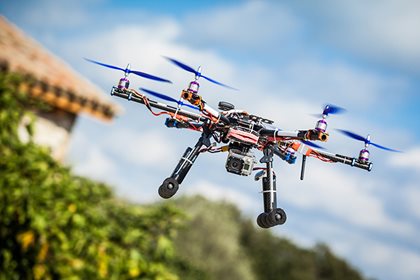Tips for creating drone rules in your community
 Look up in the sky! It’s a bird, it’s a plane… no, it’s a drone! And it could cause a potential conflict in your homeowner’s association (HOA).
Look up in the sky! It’s a bird, it’s a plane… no, it’s a drone! And it could cause a potential conflict in your homeowner’s association (HOA).While some HOAs and property management companies use the drones as a tool to conduct property inspections, these unmanned, remote-piloted flying vehicles raise important questions on safety and privacy, especially for those devices equipped with cameras and imaging technology.
“Last holiday season, drones were one of the hottest gift items across North America,” said Drew Schlegel, CCAM, CMCA – executive vice president of community management for FirstService Residential. “We’re seeing a lot of challenges with this increasingly popular hobby. The key is education, and the perseverance to stay updated on the issue as the legal landscape continues to evolve.”
So what’s the role of your community association management company when it comes to drones? Let’s take a look:
-
For now, recognize that it’s up to the appropriate government agencies.
For the most part, the proper use of drones is dictated by government agencies, not local communities or homeowners’ associations. Transport Canada has already solicited citizens for their opinions on the matter and is expected to issue a formal policy in the coming year. In the U.S., the Federal Aviation Administration (FAA) has set forth guidelines for both hobbyists and commercial drone pilots. There’s also a patchwork of additional state laws that have taken effect. For instance:
- Texas: Prohibits imaging unless the information gathered is to be used for mapping by a utility, for military purposes and a few other strictly defined uses.
- Nevada: Under Nevada law, Assembly Bill 239 (AB 239) established in October 2015, the right to operate a drone will supersede any rules or Covenants, Conditions & Restrictions (CC&Rs) set forth by HOAs, except where the operator flies the drone below 250 feet or interferes with the existing use of the property.
Overall, the National Council of State Legislatures reports that 45 states debated 168 bills regarding drones in 2015 alone. It’s too soon to see how the federal versus local dynamic will play out in Canada, but in the U.S., the FAA is pushing for uniform, national codes without additional provisions set forth by states.
- Texas: Prohibits imaging unless the information gathered is to be used for mapping by a utility, for military purposes and a few other strictly defined uses.
-
If you’re in the U.S., know the FAA’s rules.
Being aware of FAA regulations will help you know when a drone operator is acting within his or her rights, or if you should call the local law enforcement. Generally speaking, the FAA restricts the use of drones within five miles of any regulated airspace, including any helipads or heliports.
Rules for hobbyists flying drones:
- Pilots must be at least 13 years of age and provide their name, home address and e-mail address to the FAA.
- If the drone weighs between 0.55 and 55 pounds, the owner must register with the FAA.
- The drone can’t be flown above 400 feet above ground level, and flights are limited to daytime hours (thirty minutes before sunrise and thirty minutes after sunset).
- A pilot may only operate one drone at a time and it must be within line of sight at all times.
- It’s against regulations to carry any hazardous materials.
Rules for commercial drone pilots:
- Pilots must be at least 16 years of age.
- Pilots must obtain a remote pilot certificate.
- Daytime restrictions apply, and the drone must be kept within the pilot’s visual line of sight during operation.
These are just the major points of the FAA’s regulations. You can find a complete list of rules here.
- Pilots must be at least 13 years of age and provide their name, home address and e-mail address to the FAA.
-
Be aware of privacy issues.
There are several moderate restrictions that associations should consider adding to their governing documents since a chief concern for residents is privacy, particularly involving drones that are equipped with cameras and other imaging or surveillance equipment. The FAA takes a hands-off approach on this issue, citing their role as a body that ensures safety, not privacy. Most experts agree that existing privacy or “peeping Tom” laws apply to drones as well. Due to the increase in drone use, your association board may decide to adopt a rule or implement a rule change that addresses drone use to ensure residents’ security and privacy. If drone use is permitted within your association, your board should consider the most appropriate areas and time of day for drone use. Your association should also contact an insurance agency to ensure proper coverage should a drone fall and damage a common area or harm someone in the community.
When hobbyists are responsible and respectful, residents and pilots can coexist harmoniously. And for the most part, that’s the case. By staying updated on the issue – and being informed on your rights as a resident or board member – you can respond appropriately when regulations aren’t respected.